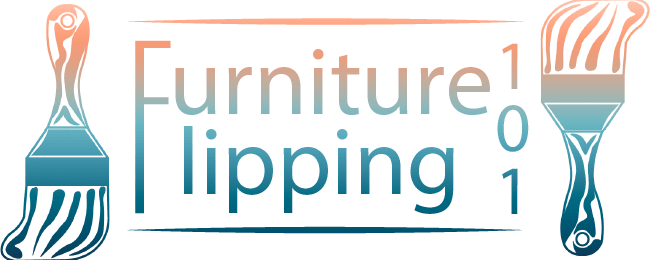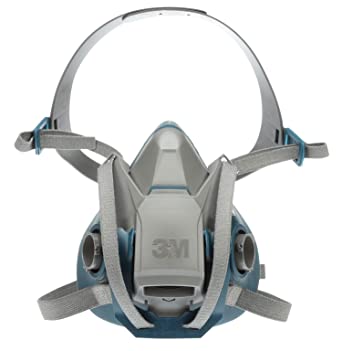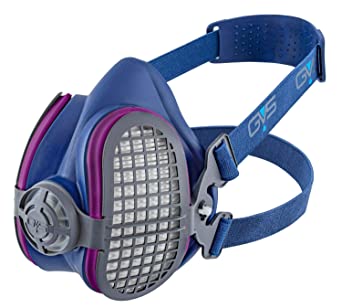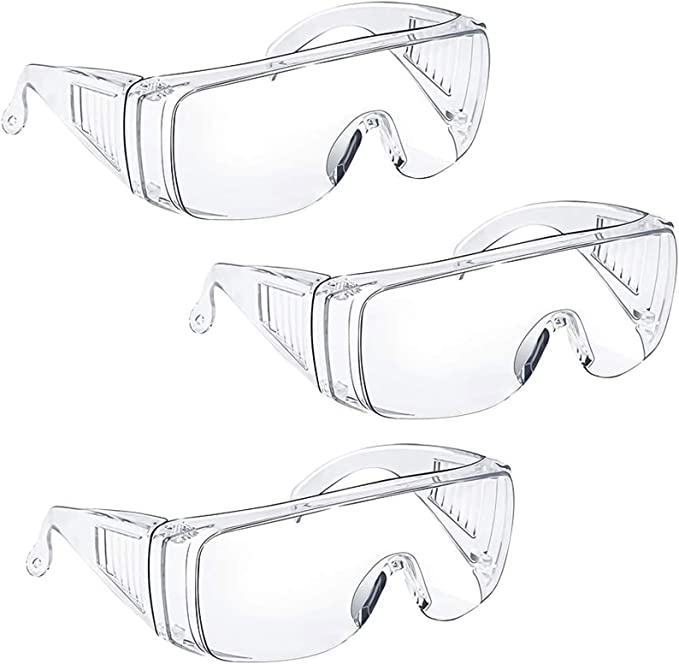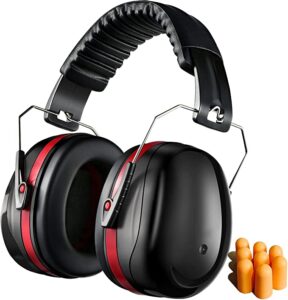Throughout the Furniture Flipping 101 program, I cover safety. If you found this article, you are interested in learning to refinish furniture safely. Almost every aspect of refinishing furniture has some measure of risk. Not every step requires PPE or personal protective equipment, but almost all require you to consider your safety.
What we cover
Safety 101
A good safety program involves three stages – first, you assess the situation and determine the most appropriate course of action; next, you identify what safety equipment you need; and third, you perform the work, following the proper procedures.
How this applies to refinishing furniture safely
Whether picking up furniture you purchased, bringing the furniture into your workspace, or working on the furniture, always follow safety protocols.
In each of the following risk categories, consider if you can avoid or reduce the risk – maybe you choose to work on a different piece or use a less-dangerous method. Next, you decide what safety equipment to use to mitigate the remaining risks. Finally, follow safety procedures – you need a plan for each practice in your shop. It may not be a written plan like job sites have, but it should be a repeatable process you can remember each time.
How dangerous is furniture refinishing?
At this point, I might have you asking yourself how dangerous furniture is and why you should be worried. We will look at several risk factors in this article and how to mitigate those risks and refinish furniture safely.
Choosing and Bringing Home Furniture Safely
The first risks involve the furniture you choose to refinish. If you are buying second-hand furniture, you need to examine it before bringing it into your home or workspace.
1. Lead
Take, for instance, an often-overlooked risk, lead. Many furniture paints and house paints manufactured before 1990 contain lead. Lead was added to products to increase drying time and make them more durable. Of course, it had the side effect of being highly toxic and causing serious health problems.
If you plan on refinishing furniture safely, you must test for lead. Testing for lead is simple and inexpensive, so why not do it? Check out my quick video on testing for lead. If you discover lead, you must consider whether you can refinish the furniture safely or not. Decide if you plan on proceeding and taking adequate precautions, disposing of the piece, or, better yet, not buying it.
You can bring a lead test kit when you buy furniture – the test does not harm the furniture and takes moments to test. All lead is considered hazardous waste, so contact your municipality for their disposal requirements. Encapsulating paints are available for lead paint, but consider if your customers want to purchase a piece of furniture with lead paint.
2. Bugs
Another risk is bugs, while not necessarily a safety risk but a risk to your home and your family. Bed bugs, cockroaches, woodworms, etc., require extermination. By examining the furniture well before you bring it into your home or workshop, you can then determine whether you plan to treat the furniture or not buy it.
Know what to look for when examining the furniture. Watch for clusters of black dots which might be poop or eggs or actual bug bodies. Woodworms live inside small holes in furniture, and when alive, they leave small dustings of sawdust on the floor or anywhere the dust can fall out of the hole. Avoid the problem by not taking the piece home or mitigate the risk by treating the furniture.
3. Injury
Other risks include back strain or injury from dropping a piece on your toes. I have tennis elbow from moving a heavy piece of furniture myself.
So, plan to have help with heavy pieces and wear good shoes – steel-toed boots might be overkill, but sandals aren’t sufficient. Wear gloves with rough or dirty pieces to prevent slivers and improve your grip on slippery pieces.
Keep in mind, these injuries can happen anytime you are working with furniture, not only when bringing it home.
Working with Furniture Safely
Once you have the piece home and are sure it’s free of lead and bugs, you can consider the refinishing risks.
4. Stripping
Likely one of the top health risks when refinishing, chemical strippers are dangerous. They contain carcinogens (some have been banned) and VOCs and can cause chemical burns and blindness. Even seemingly harmless alcohol is toxic and absorbs through your skin, lungs, and eyes.
Avoiding Risk
Decide whether you need to strip the finish. If the finish is intact, you may be able to go over it with a gel stain, or if it is shellac, repair or amalgamate it using alcohol. If you are painting, you don’t need to remove the old finish unless it is in bad shape.
I often recommend chemical strippers rather than sanding off a finish. This recommendation is not for safety but to help preserve the wood.
Mitigating Risk
If you can’t avoid the danger, the next step in safety is to mitigate the risk. If you feel that preserving the wood’s patina and thickness is worth the risk of dealing with chemical strippers, wearing the proper PPE or personal protective equipment can prevent exposure to harmful byproducts.
Often perceived as a way to refinish furniture safely, you can use a “green” chemical stripper. Read their MSDS and safety instructions before starting or choosing this product. These less harmful strippers also often have some pretty serious chemicals in them. These products often take longer to work and require more applications.
5. Sanding
Sawdust is combustible when it builds up in an enclosed space. All it takes is one spark to cause an explosion. Dust can cause allergic reactions, and sanding produces ultra-fine particulates you do not want to breathe into your lungs. Flying debris can get into your eyes when you are using an electric sander or other power tools.
Scuff sanding to paint furniture will probably not cause too much dust and is a low-risk process if no lead is present. You should still wear a dust mask and be conscious of dust build-up near ignition sources.
Good ventilation and dust control with a shop vac or dust collection system help reduce this risk. We will cover PPE shortly.
6. Painting, staining, & finishing risks
Many of us use water-based or water-borne paints and finishes both for ease of cleanup and because, generally, these products are considered safer due to their lower volatile organic compounds or VOCs. We tend to think of them as safe.
But there are risks even with so-called safe products. When you use a sprayer to apply paints and finishes, you atomize them, making them airborne. You do not want to inhale these particulates – this is a health risk. Wear a respirator when spraying any products.
Even when applying paints and finishes by brush, there are still VOCs in many water-based products. I am sensitive to scents and find water-based wall paints quite smelly, and I get headaches from them. This odour doesn’t mean they are dangerous, but VOCs are present, and therefore there is some degree of risk.
Most of us realize that we should not breathe in the fumes of oil-based products, but alcohol used to remove shellac is also not good for you. Same with lacquers – especially catalyzed products containing isocyanates. Avoid risk by choosing a low or zero VOC product, or mitigate the risk by working in a well-ventilated area with the proper PPE.
Getting products on our skin is also bad for our health – our skin is our largest organ and readily absorbs chemicals into our bodies.
7. Tool Safety Risks
We often use power tools for our furniture projects, whether to build or repair them. Using a power tool requires sufficient knowledge of its dangers. This article is too short to cover every tool and its safety.
But what you can do is understand the safety precautions that manufacturers have built-in and methods to mitigate injury. Keeping safety guards in place and following good practices like using a push stick or riving knife with your table saw help save your digits and possibly your life. Protect your hearing and your eyes as well. Even non-power tools can cause injury. Chisels and knives require respect when using them.
In the Advanced course’s Furniture Repairs module, you learn how to use a table or rotary saw and what safety precautions to take.
8. Self-Combustion
Another significant risk you must watch for is self-combustion. Petroleum products and oils can self-combust when left on rags and in brushes. When these products cure, they react with air. This reaction produces heat. If the heat cannot dissipate, it can build up enough to burst into flame.
Always lay rags out flat to dry or immerse them in water. I like to take the added precaution of taking them outside to dry flat. Self-combustion can happen within minutes, depending on the product. Our friends used Old Masters™ oil-based stain on their new home’s doors and ceiling beams. One was using a sponge to apply the stain and noticed the sponge heating up in her hand. They put the rags outside in the metal stain pail on their deck and went for a walk. They came home to their neighbours spraying a hose on their new deck, putting out the fire in the pail.
Here is a short video they took later that day of another fire with the same products.
9. Chemical and Product Storage
Along the same lines as self-combustion, you must consider where and how you store your chemicals. Some chemicals do not play well together. Bleach doesn’t mix safely with most chemicals, so it should not be stored where it can leak or mix with another product.
Keep your chemicals out of children’s reach, but also keep them away from ignition sources or where they might get wet and start to rust. Rusty cans can leak. Keep water-based or other susceptible products from freezing. Containers could burst and leak, plus they will be ruined, which isn’t a risk, except to your pocketbook.
Keep products in their original containers or make sure they are well-marked. Unfortunately, there are some sad stories where this didn’t happen, and people mistook the contents for something else.
10. People
One more thing I want to squeeze in here is a risk we may or may not consider. If you are selling your products, you are dealing with people. So, while most people are fantastic, some aren’t, so think about your practices. If people come to your home, they are often strangers.
You may not be able to avoid strangers coming into or to your home, but try to mitigate the risk – have someone else home with you, use security cameras, don’t keep cash on hand, and maybe have a dog. Some people sell their pieces elsewhere, either in stores, markets, or designated public meeting places.
And if you are dealing with money, set up an electronic method by accepting credit or debit cards, e-transfers, or whatever works for you. Cash is king, but it can make for a risky situation.
Personal Protective Equipment (PPE) to Refinish Furniture Safely
Okay, let’s look at the equipment you can use to refinish furniture safely. If you can’t avoid the risk, you can mitigate it with the proper personal protective equipment.
Organic Vapour Respirators
One of the most essential pieces of safety equipment I own is my organic vapour respirator. I wear this mask whether chemically stripping finishes or using my spray gun. It blocks all VOCs and particulates.
The important thing is to choose the proper respirator. Choose an organic vapour respirator that is NIOSH approved for organic vapours. Choose a trusted brand – this is not the time to save a few dollars on off-brand products. The cartridge should say P100 and block organic vapours. The P100 blocks 100% of particulates. A P95 only blocks 95%.
Dust Masks
When sanding or working with airborne particulates, including smoke, wear a mask rated for particulates. Choose a high filtration rate of P100 or P95. Replace your mask or cartridges regularly.
Chemical Resistant Gloves
Chemical-resistant gloves protect against the harsh solvents in chemical strippers. These are resistant, not proof – always keep a spare pair or two on hand for a backup. The longer they are, the more protection they offer.
Other Gloves
Leather gloves protect against slivers and heat – when I burn wood for Shou Sugi Ban, I wear long leather welding gloves. Disposable nitrile gloves are suitable for stripping with alcohol, applying stains and dyes, and priming and painting. Keeping chemicals off of your skin is a good practice.
Safety Glasses
Keep fumes, dust, and particulates out of your eyes with wrap-around safety glasses. There are many options to choose from and it is a good idea to have a few different styles on hand for different situations.
Hearing Protection
Power tools like sanders and tablesaws can cause a lot of hearing damage. Wear good hearing earmuffs or ear plugs when working with loud tools.
Other PPE
Additionally, wear long sleeves, pants, and closed-toe shoes, and keep long hair pulled back. If you are working with power tools, do not wear clothing with drawstrings; these can get pulled into the tool, bringing your body along. Wear an apron to help keep your clothes clean but keep the ties away from any spinning machines. Change any clothing that becomes contaminated with chemicals.
Keep clean water handy to rinse off any chemicals that might get on your skin and eyes.
How to Refinish Furniture Safely Using Good Practices
And none of this information matters if you don’t follow good practices to refinish furniture safely. We looked at some of those practices as we reviewed the risks and equipment earlier in this article. What can happen, though, is we become lax, or it is an inconvenience to wear the equipment or keep a guard in place.
You will develop good habits by consciously acknowledging the risks and following good safety practices. You likely already have some bad habits that you will need to break.
To demonstrate what I mean by developing good safety practices or habits, we will walk through a common task and identify the risk areas and what we can do to mitigate these risks.
How to Develop a Procedure to Refinish Furniture Safely
Let’s look at the safety procedures when refinishing a piece of furniture.
You examine the task and identify the steps you will take. After assessing the furniture, you need to assess your procedure. At each stage, ask if you can avoid or mitigate the inherent risks in the step.
- Prep: first, you will clean the piece, maybe using a chemical like TSP or mineral spirits that require gloves. You may need to scuff sand.
- Can you use a less caustic or toxic cleaner? *TIP odorless mineral spirits are no less toxic than regular – possibly more so because people think they are safe. Klean Strip Odorless Mineral Spirits MSDS and TSP MSDS
- What risks does the cleaner involve – mixing up dry TSP and water may result in airborne particulates, so wear a mask and gloves.
- If scuff sanding, wear a dust mask.
- Workspace: You need to work in a well-ventilated area and somewhere with access to soap and clean water should you need to rinse TSP or mineral spirits off your skin.
- Stripping: Then you will sand or chemically strip the piece:
- For chemical stripping, you need a respirator, chemical-resistant gloves, and eye protection. Your hair should be contained, and wear long sleeves and pants.
- Sanding will require dust collection or containment, a dust mask, and safety glasses. Your hair should be contained.
- Painting/Staining/Finishing: determine what PPE you need to use when handling and applying the products.
- Cleanup and Waste Disposal:
- Chemical stripping requires the disposal of toxic products – how will you handle this?
- And the rags used to clean the piece afterwards must be laid out flat or immersed in water.
- How will you clean your tools, and how will you dispose of the cleaning waste products?
Now that you know what to do, you can create a plan:
You will work in a well-ventilated area, bring a bucket of clean water and some soap, have your dust collection set up, your mask or respirator, gloves and other safety equipment handy.
You will have containers to collect and dispose of any chemical waste, a plan to deal with the dirty rags, brushes, or tools, plus their cleaning waste. By repeating the process a few times, you will remember to have your PPE ready and following the same steps will prevent forgetting important things like laying the rags flat to dry.
And as noted earlier, when selling your pieces from your home have a safety plan in place, such as having someone else home, accepting electronic forms of payment rather than cash, and having security cameras. Also, ensure your home is safe for those buying your products – tripping hazards or anxious pets that may bite are two considerations.
Summary
Make a list of the procedures you use when building or refinishing furniture, and mentally walk through the safety steps – think avoidance or mitigation and what safety equipment and practices you need to follow.
Repeat this process for each procedure, which will then start forming your safety program. You can write the steps down if that works well for you or reinforce them through repetition.
Set up a dedicated area for the tasks and keep your safety equipment in that area – that way, when you reach for your safety glasses or respirator, it is ready for use.
